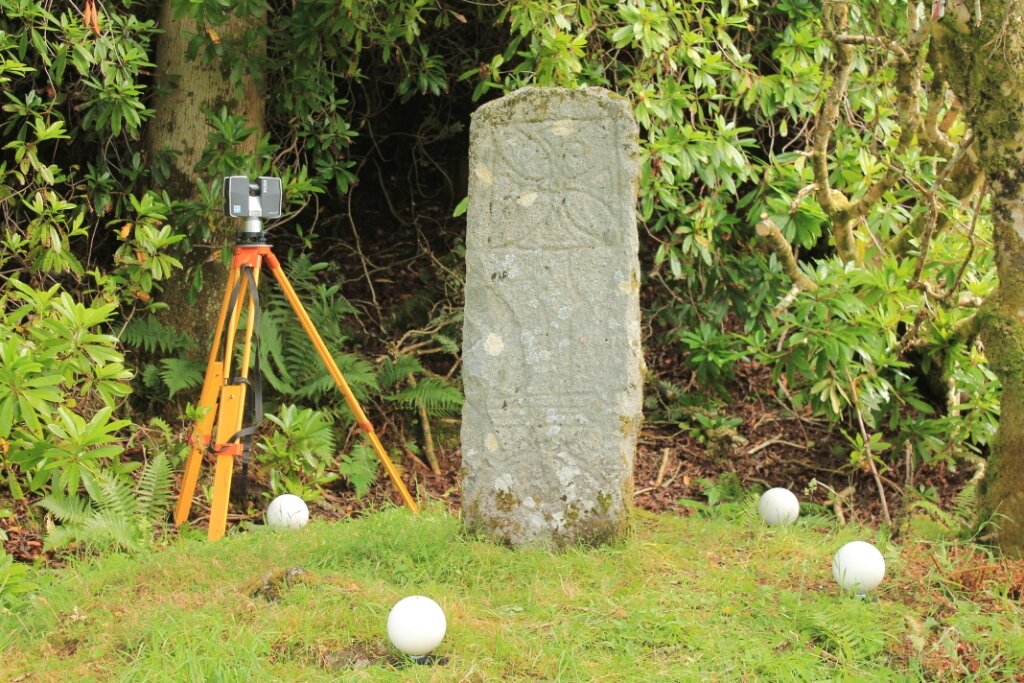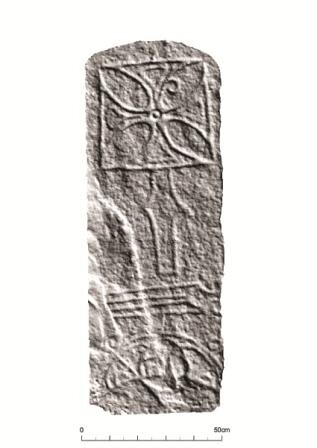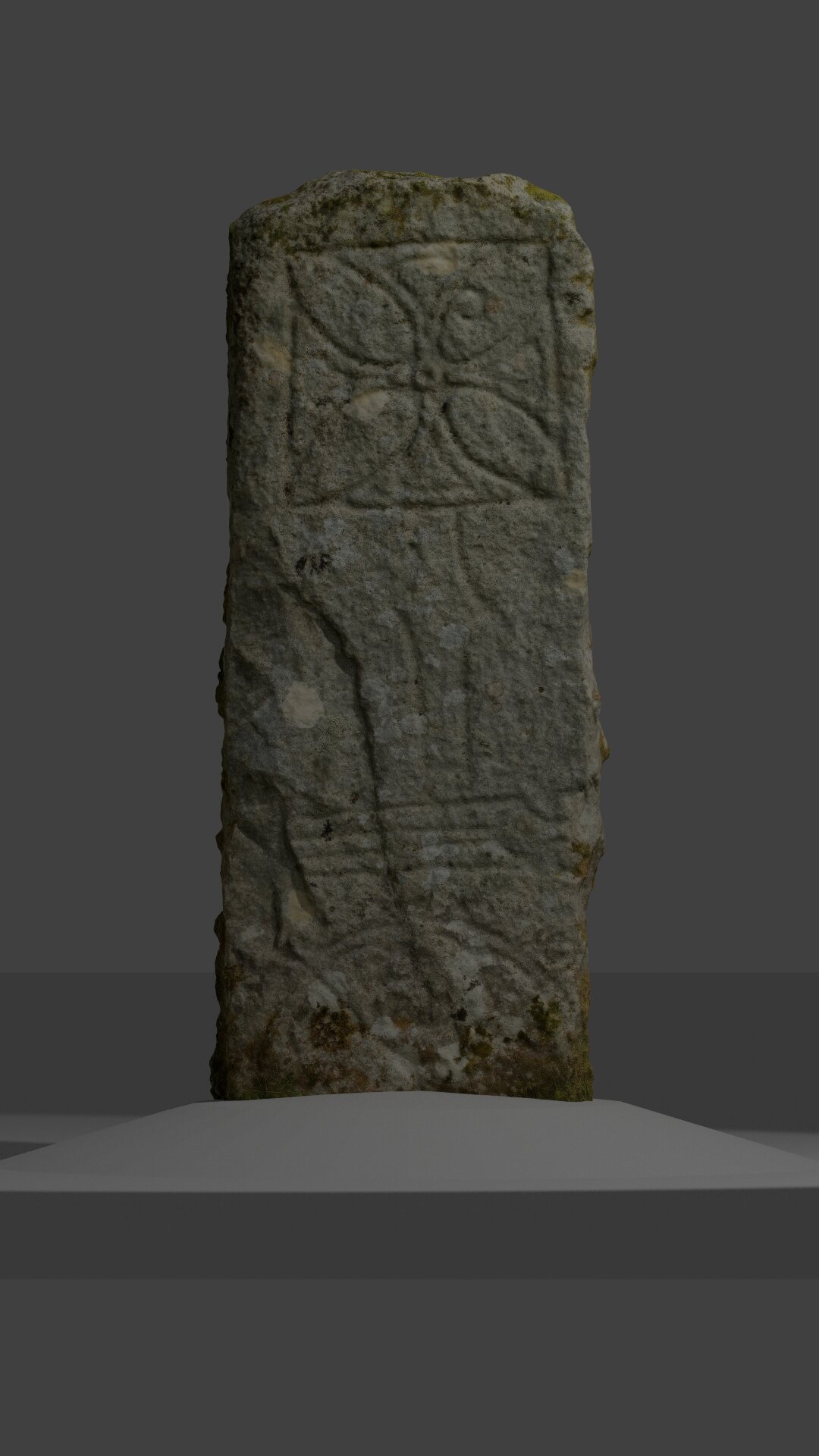Recording Raasay House Pictish Cross Slab
In the spring of 2016 AOC recorded the Raasay House cross marked slab on behalf of Forestry Commission Scotland. This fine example of early historic art stands in the grounds of Raasay House, on the Inner Hebridean Isle of Raasay. It stands a little over 1.5m in height and features an incised cross-of-arcs above a cusped shaft. Below this are a ‘tuning fork’ and a crescent-and-V-rod symbol, distinctive Pictish symbols which occur frequently on carved stones of the period.
The slab was discovered in the late 18th or early 19th century during the construction of the road from Raasay House to the nearby pier. It was placed in a modern base on a stony mound in its present position. Curle dated the cross slab to the 7th century but this interpretation has since been challenged and it may in fact be earlier in date.
This is not the only early historic artwork on Raasay: there are at least three other examples including a cross incised on a rocky outcrop in Churchton Bay, and two further examples from the island’s burial ground.
AOC undertook a comprehensive programme of recording including laser scanning and photogrammetry. The resulting datasets were processed into high resolution geometric meshes for visualisation under simulated raking light conditions, which enables us to produce enhanced images and so perceive the carvings more clearly.



